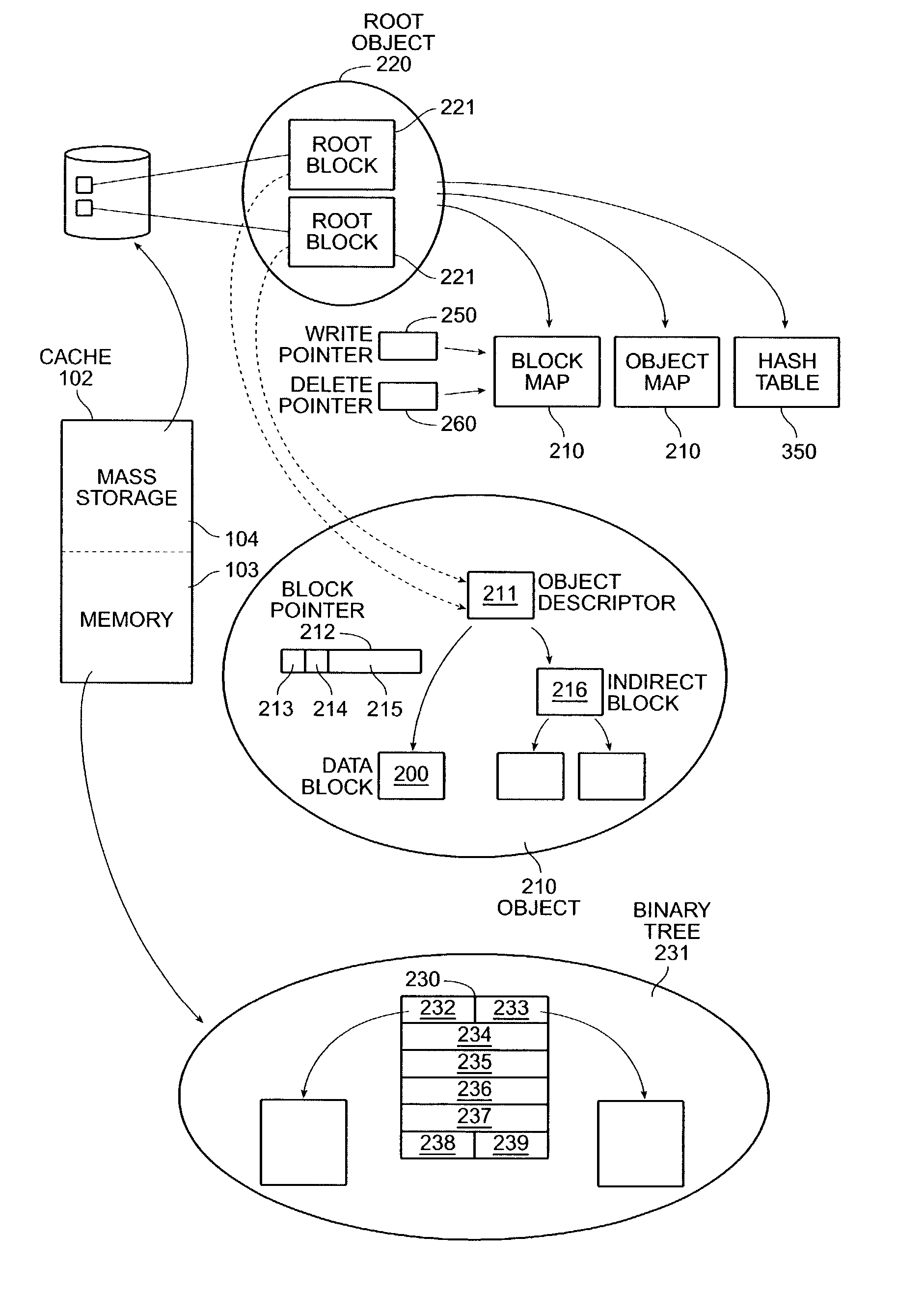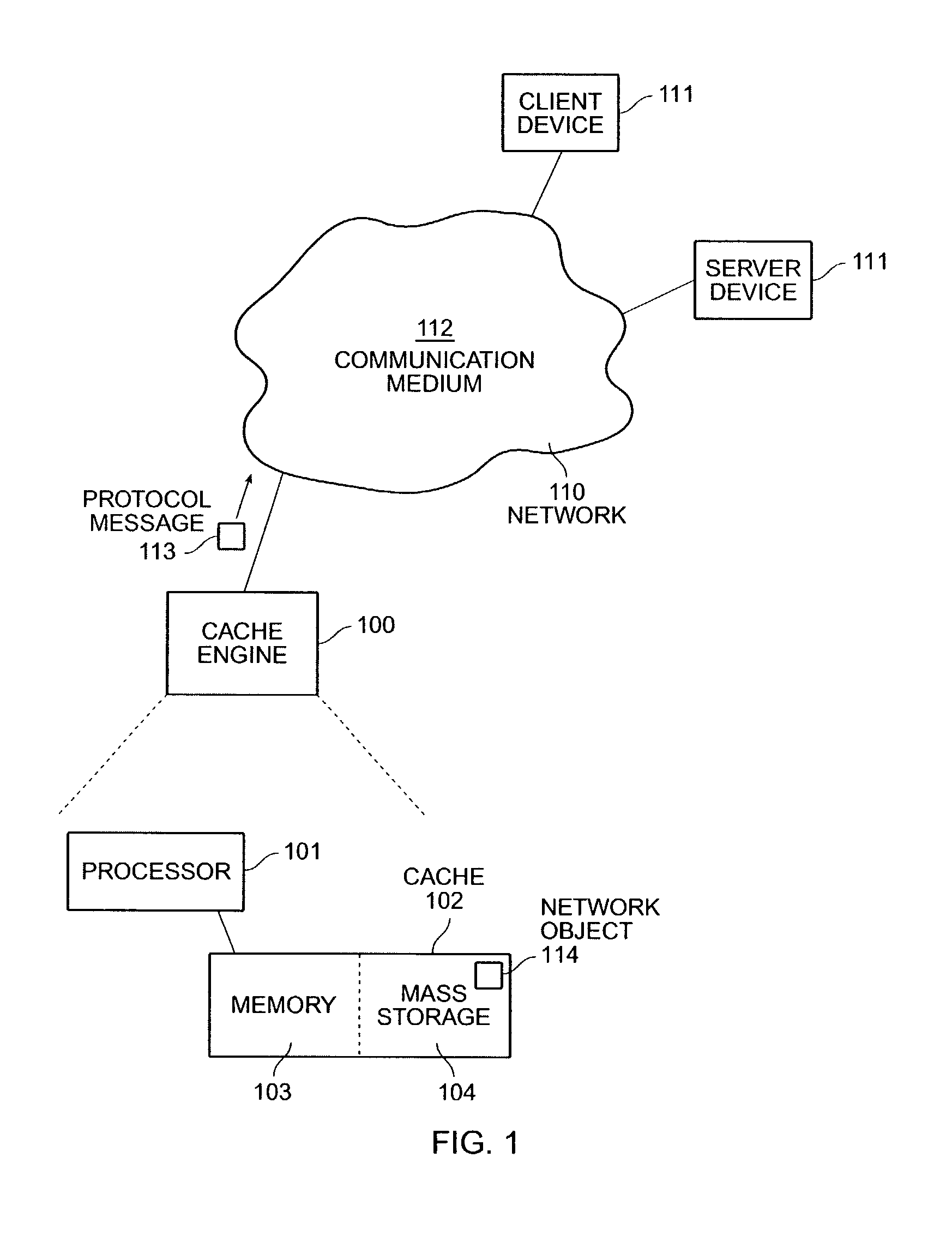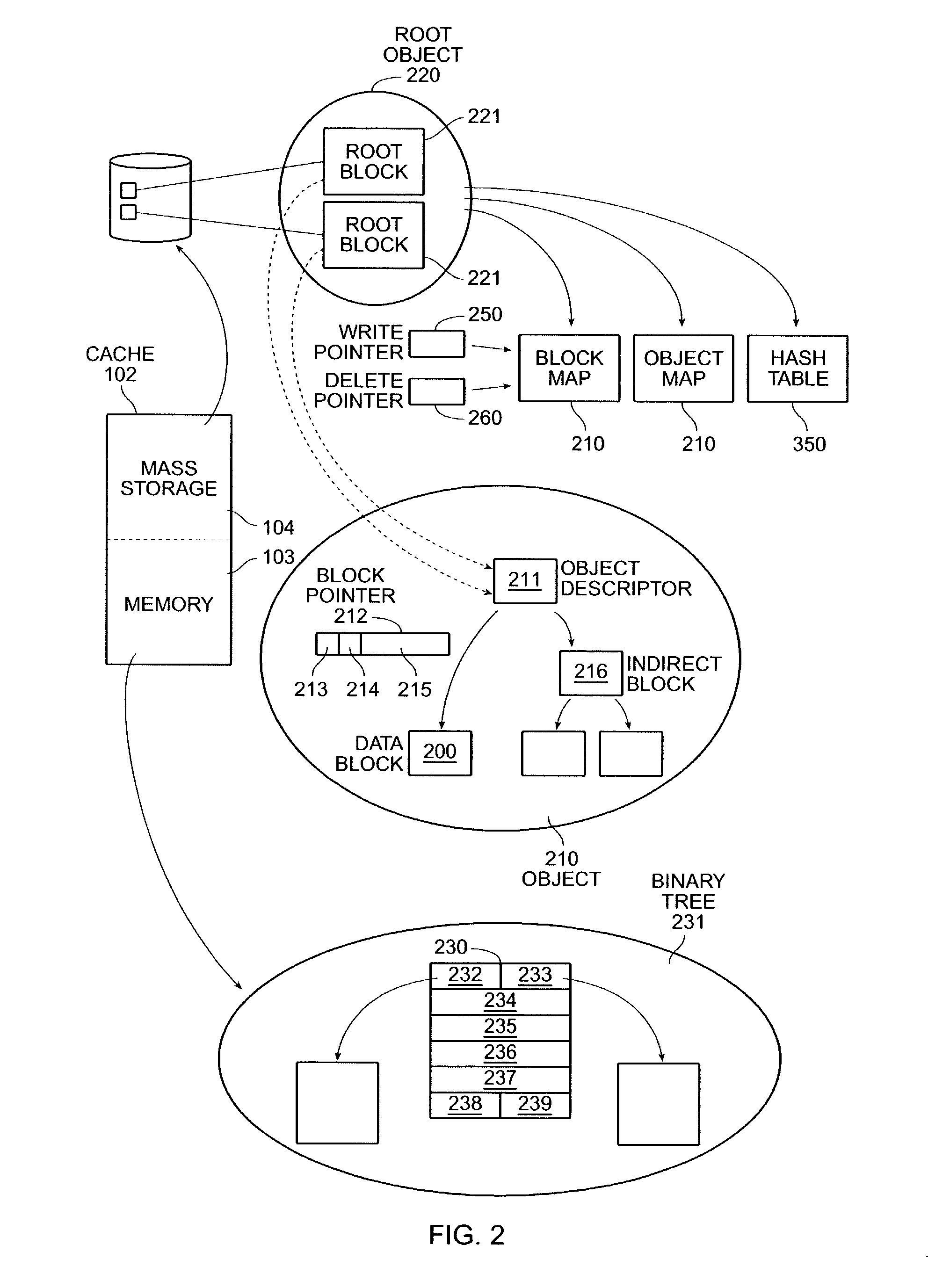Network object cache engine
a network object and cache engine technology, applied in the field of network object cache engines, can solve the problems of affecting the communication structure of the network and the resources, affecting the communication path between the server and its clients, and the relative slowness of the communication path between the client and the network,
Inactive Publication Date: 2003-02-27
BLUE COAT SYSTEMS
View PDF0 Cites 88 Cited by
- Summary
- Abstract
- Description
- Claims
- Application Information
AI Technical Summary
Benefits of technology
[0010] In a preferred embodiment, the cache engine collects information to be written to disk in write episodes, so as to maximize efficiency when writing information to disk and so as to maximize efficiency when later reading that information from disk. The cache engine performs write episodes so as to atomically commit changes to disk during each write episode, so the cache engine does not fail in response to loss of power or storage, or other intermediate failure of portions of the cache. The cache engine stores key system objects on each one of a plurality of disks, so as to maintain the cache holographic in the sense that loss of any subset of the disks merely decreases the amount of available cache. The cache engine selects information to be deleted from disk in delete episodes, so as to maximize efficiency when deleting information from disk and so as to maximize efficiency when later writing new information to those areas of disk. The cache engine responds to the addition or deletion of disks as the expansion or contraction of the amount of available cache.
Problems solved by technology
In computer networks for transmitting information, information providers (sometimes called "servers") are often called upon to transmit the same or similar information to multiple recipients (sometimes called "clients") or to the same recipient multiple times. This can result in transmitting the same or similar information multiple times, which can tax the communication structure of the network and the resources of the server, and cause clients to suffer from relatively long response tines.
This problem is especially acute in several situations: (a) where a particular server is, or suddenly becomes, relatively popular; (b) where the information from a particular server is routinely distributed to a relatively large number of clients; (c) where the information from the particular server is relatively time-critical; and (d) where the communication path between the server and its clients, or between the clients and the network, is relatively slow.
While this method achieves the goal of reducing traffic in the network and load on the server, it has the drawback that significant overhead is required by the local operating system and the local file system or file server of the proxy.
This adds to the expense of operating the network and slows down the communication path between the server and the client.
There are several sources of delay, caused primarily by the proxy's surrendering control of its storage to its local operating system and local file system: (a) the proxy is unable to organize the information from the server in its mass storage for most rapid access; and (b) the proxy is unable to delete old network objects received from the servers and store new network objects received from the servers in a manner which optimizes access to mass storage.
In addition to the added expense and delay, the proxy's surrendering control of its storage restricts functionality of the proxy's use of its storage: (a) it is difficult or impossible to add to or subtract from storage allocated to the proxy while the proxy is operating; and (b) the proxy and its local file system cannot recover from loss of any part of its storage without using an expensive redundant storage technique, such as a RAID storage system.
Method used
the structure of the environmentally friendly knitted fabric provided by the present invention; figure 2 Flow chart of the yarn wrapping machine for environmentally friendly knitted fabrics and storage devices; image 3 Is the parameter map of the yarn covering machine
View moreImage
Smart Image Click on the blue labels to locate them in the text.
Smart ImageViewing Examples
Examples
Experimental program
Comparison scheme
Effect test
Embodiment Construction
[0144] Although preferred embodiments are disclosed herein, many variations are possible which remain within the concept, scope, and spirit of the invention, and these variations would become clear to those skilled in the art after perusal of this application.
the structure of the environmentally friendly knitted fabric provided by the present invention; figure 2 Flow chart of the yarn wrapping machine for environmentally friendly knitted fabrics and storage devices; image 3 Is the parameter map of the yarn covering machine
Login to View More PUM
 Login to View More
Login to View More Abstract
The invention provides a method and system for caching information objects transmitted using a computer network. A cache engine determines directly when and where to store those objects in a memory (such as RAM) and mass storage (such as one or more disk drives), so as to optimally write those objects to mass storage and later read them from mass storage, without having to maintain them persistently. The cache engine actively allocates those objects to memory or to disk, determines where on disk to store those objects, retrieves those objects in response to their network identifiers (such as their URLs), and determines which objects to remove from the cache so as to maintain sufficient operating space. The cache engine collects information to be written to disk in write episodes, so as to maximize efficiency when writing information to disk and so as to maximize efficiency when later reading that information from disk. The cache engine performs write episodes so as to atomically commit changes to disk during each write episode, so the cache engine does not fail in response to loss of power or storage, or other intermediate failure of portions of the cache. The cache engine also stores key system objects on each one of a plurality of disks, so as to maintain the cache holographic in the sense that loss of any subset of the disks merely decreases the amount of available cache. The cache engine also collects information to be deleted from disk in delete episodes, so as to maximize efficiency when deleting information from disk and so as to maximize efficiency when later writing to those areas having former deleted information. The cache engine responds to the addition or deletion of disks as the expansion or contraction of the amount of available cache.
Description
[0001] This application is a continuation of application Ser. No. 09 / 093,533 filed Jun. 8, 1998, Attorney docket Number 101.1001.02, of non-provisional application Serial No. 60 / 048,986, filed Jun. 9, 1997, Attorney docket Number 101.1001.01, and of PCT application Serial Number PCT / US98 / 11834 filed Jun. 9, 1998 Attorney docket No. 101.1001.03.[0002] 1. Field of the Invention[0003] This invention relates to devices for caching objects transmitted using a computer network.[0004] 2. Related Art[0005] In computer networks for transmitting information, information providers (sometimes called "servers") are often called upon to transmit the same or similar information to multiple recipients (sometimes called "clients") or to the same recipient multiple times. This can result in transmitting the same or similar information multiple times, which can tax the communication structure of the network and the resources of the server, and cause clients to suffer from relatively long response tine...
Claims
the structure of the environmentally friendly knitted fabric provided by the present invention; figure 2 Flow chart of the yarn wrapping machine for environmentally friendly knitted fabrics and storage devices; image 3 Is the parameter map of the yarn covering machine
Login to View More Application Information
Patent Timeline
 Login to View More
Login to View More IPC IPC(8): G06F11/14G06F12/08G06F17/30
CPCG06F11/1435G06F12/0813G06F17/30902G06F16/9574
Inventor MALCOLM, MICHAELZARNKE, ROBERT
Owner BLUE COAT SYSTEMS
Features
- R&D
- Intellectual Property
- Life Sciences
- Materials
- Tech Scout
Why Patsnap Eureka
- Unparalleled Data Quality
- Higher Quality Content
- 60% Fewer Hallucinations
Social media
Patsnap Eureka Blog
Learn More Browse by: Latest US Patents, China's latest patents, Technical Efficacy Thesaurus, Application Domain, Technology Topic, Popular Technical Reports.
© 2025 PatSnap. All rights reserved.Legal|Privacy policy|Modern Slavery Act Transparency Statement|Sitemap|About US| Contact US: help@patsnap.com



